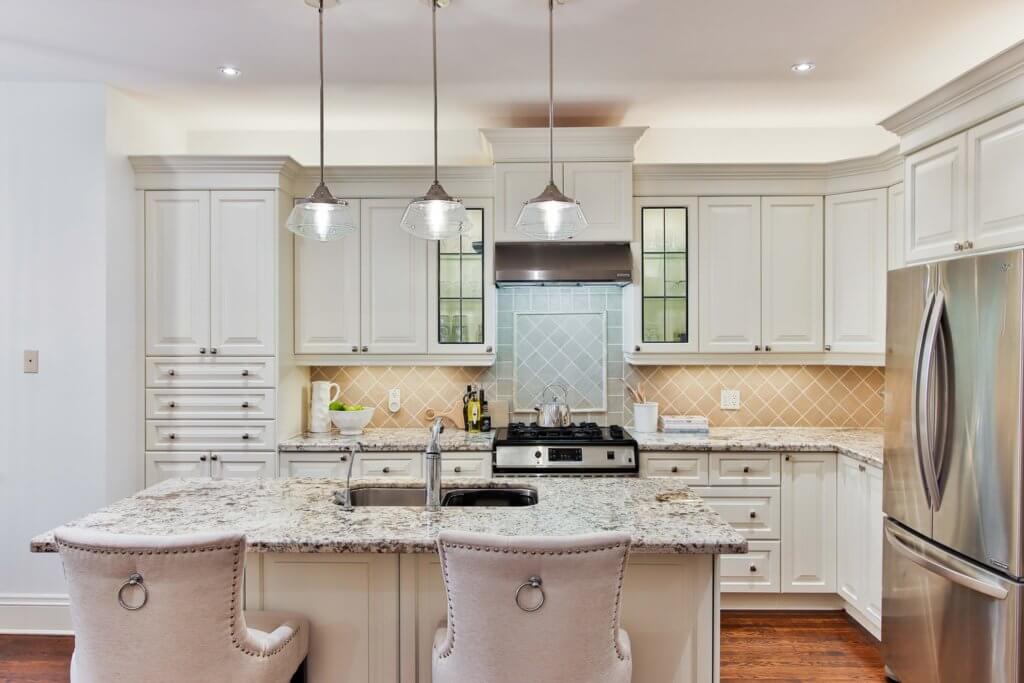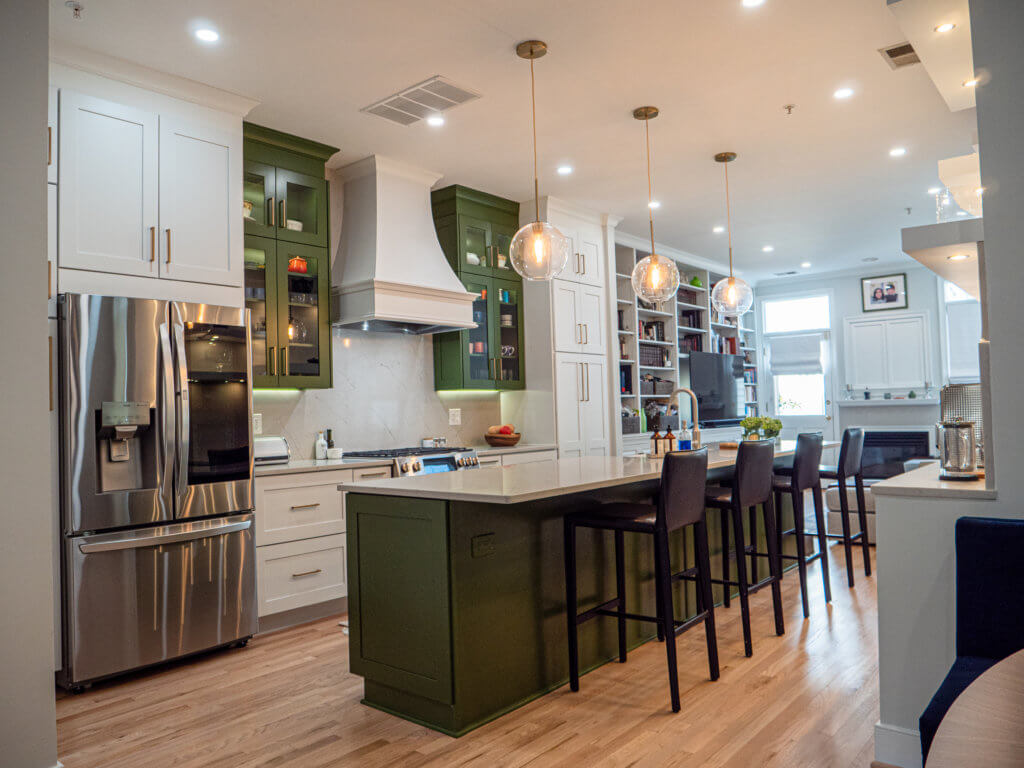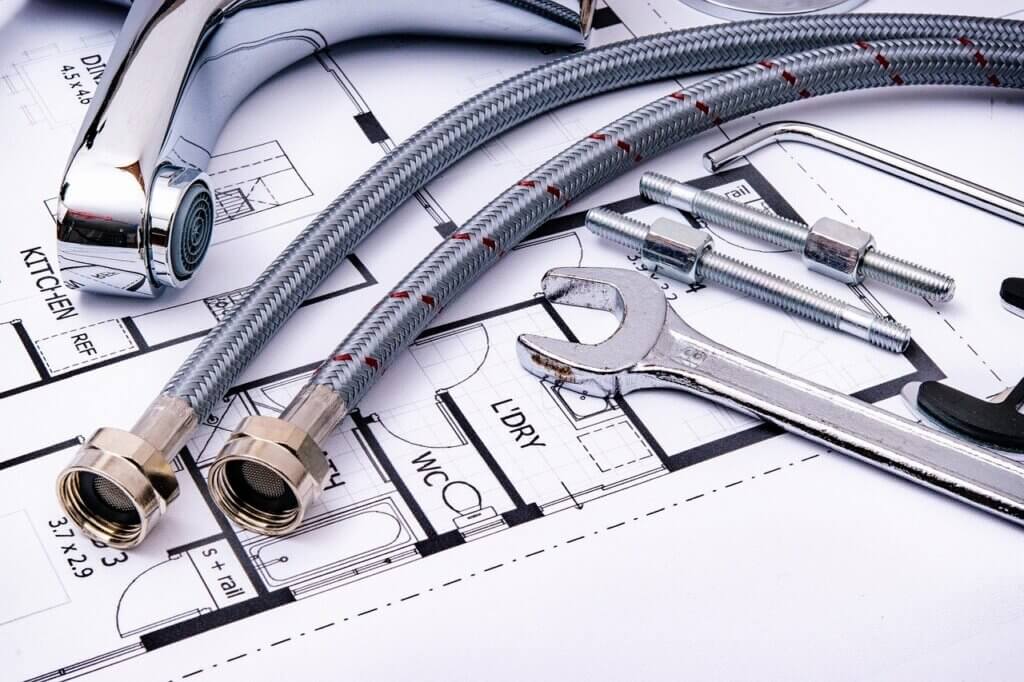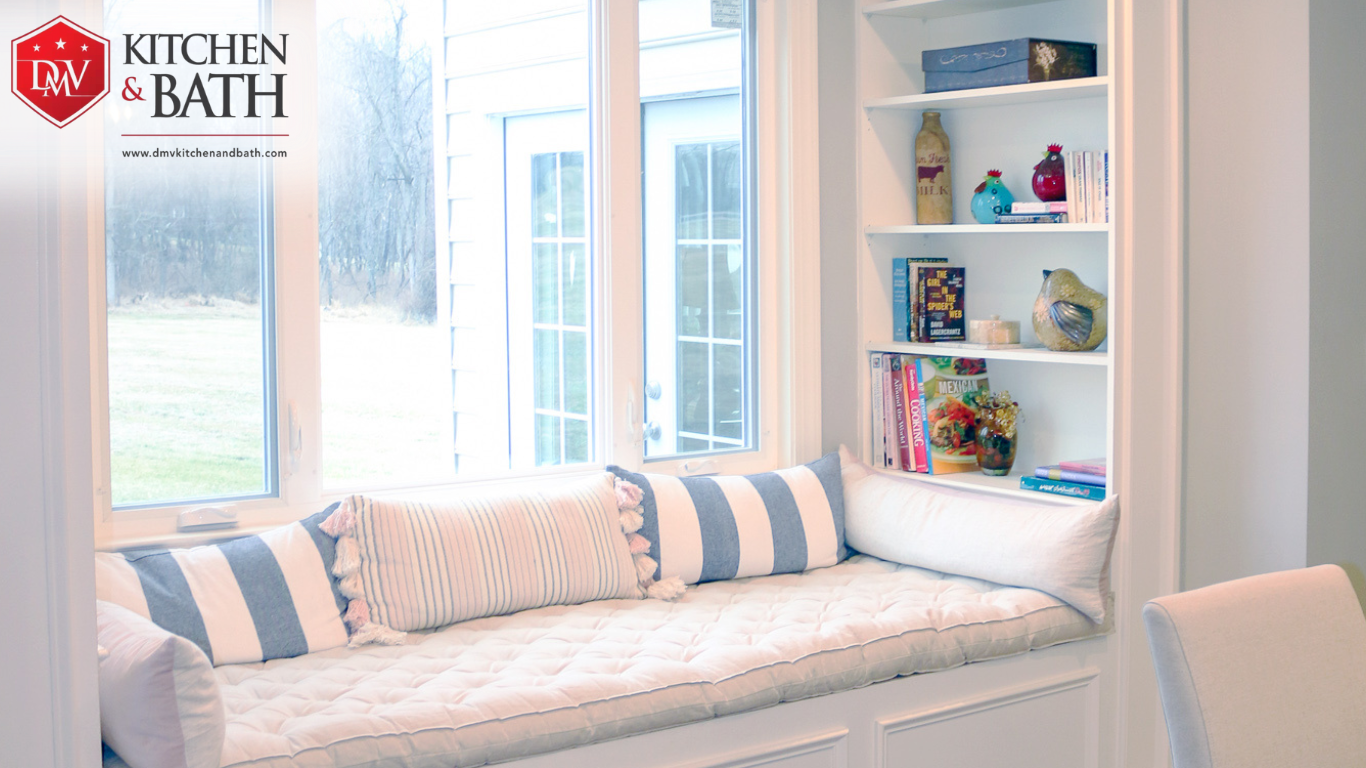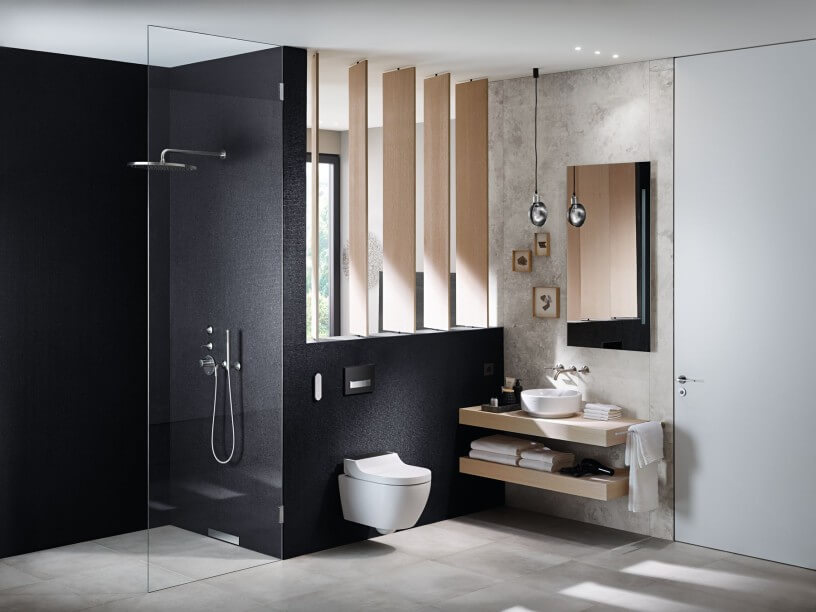
Truth About Kitchen and Bathroom Remodeling: Navigating Restrictions and Expectations9 min read
Kitchen and bathroom remodeling projects are among the most popular and impactful home improvements undertaken by homeowners. These spaces play a crucial role in our daily lives, and a well-designed and updated kitchen or bathroom can significantly enhance both the functionality and aesthetic appeal of a home. However, amid the excitement of envisioning a fresh, modern space, it’s important to uncover the truth about the intricacies and challenges involved in these remodeling endeavors.
In the modern age, kitchen and bath remodeling has transcended mere functionality to embody a harmonious blend of cutting-edge technology, sleek design, and sustainability. Smart appliances and integrated devices have become integral components, allowing homeowners to control and monitor their kitchens and bathrooms with unprecedented convenience. Minimalist aesthetics are increasingly favored, emphasizing clean lines, neutral color palettes, and clutter-free spaces.
In both kitchens and bathrooms, eco-conscious choices, such as energy-efficient appliances, water-saving fixtures, and recycled materials, are gaining prominence, reflecting a heightened awareness of environmental sustainability. As lifestyles evolve, open-concept layouts in kitchens continue to dominate, fostering a seamless integration with living spaces, while bathrooms are transformed into personalized sanctuaries with spa-like features, high-tech enhancements, and a focus on luxurious comfort.
Contents
Understanding Kitchen and Bathroom Remodeling Restrictions
Kitchen and bathroom remodeling projects are subject to various restrictions and regulations, which can vary depending on your location. It’s crucial to be aware of these restrictions to ensure that your remodeling project complies with local building codes and regulations. Here are some common considerations:
Building Codes
Each area has its own set of building codes that dictate the minimum standards for construction and remodeling. These codes cover aspects such as structural integrity, electrical work, plumbing, and fire safety. Ensure that your remodeling plans adhere to these codes.
Zoning Regulations
Zoning regulations determine how land can be used in specific areas. They may impact factors such as the size and height of structures, setbacks from property lines, and the overall aesthetics of the neighborhood. Check with your local zoning office to understand any restrictions that may apply to your remodeling project.
Permits
Most remodeling projects require permits from the local building department. This ensures that the work is inspected by professionals to guarantee it meets safety and code standards. Common permits for kitchen and bathroom remodeling include electrical, plumbing, and building permits.
Historic Districts or Homeowners’ Associations
If your property is located in a historic district or is subject to homeowners’ association (HOA) rules, there may be additional restrictions on what changes you can make to the exterior or certain features of your home. These restrictions are often in place to preserve the character of the neighborhood.
Accessibility Standards
For bathroom remodels you may need to consider accessibility standards, especially if you are making changes to accommodate individuals with disabilities or aging in place. This can include features like wider doorways, grab bars, and accessible shower or bath options.
Environmental Regulations
Some areas have specific regulations regarding the disposal of construction waste and the use of environmentally friendly materials. Ensure that your remodeling plans align with any environmental guidelines in your area.
Plumbing and Electrical Codes
Both kitchen and bathroom remodels often involve changes to plumbing and electrical systems. Make sure that any modifications meet local codes, including properly installing fixtures, outlets, and ventilation.
Energy Efficiency Standards
Some regions have specific energy efficiency requirements for new construction or major renovations. Check if your remodeling project needs to adhere to any energy standards, such as the installation of energy-efficient appliances or insulation.
Note:
To navigate these restrictions effectively, it’s advisable to consult with professionals, such as architects, contractors, or local building officials, who can provide guidance based on your specific location and project details. Always obtain the necessary permits and approvals before starting any kitchen and bath remodeling work to avoid legal issues and ensure the safety and compliance of your project.
Kitchen and Bathroom Remodeling Expectations
Kitchen and bathroom remodeling projects are exciting endeavors that can significantly enhance the functionality, aesthetics, and value of your home. Here are some key expectations and considerations for both kitchen and bathroom remodels.
Kitchen Remodeling Expectations:
Improved Functionality
A well-planned kitchen remodel can enhance the overall functionality of the space. This may involve optimizing the layout, adding storage solutions, and improving workflow to make cooking and entertaining more enjoyable.
Upgraded Appliances
Many kitchen remodels include the installation of new appliances. Upgrading to modern, energy-efficient appliances not only improves the aesthetics but also enhances the efficiency of your kitchen.
Enhanced Aesthetics
Kitchen remodeling often focuses on aesthetic improvements. This may include updating cabinets, countertops, backsplashes, and flooring to create a more contemporary or personalized look that aligns with your style preferences.
Increased Home Value
A well-executed kitchen remodel can significantly increase the resale value of your home. Potential buyers often prioritize updated kitchens, making it a wise investment for the long term.
Energy Efficiency
Incorporating energy-efficient features, such as LED lighting, energy-efficient appliances, and well-insulated windows, can not only reduce your utility bills but also contribute to a more sustainable home.
Expanding Space
Some kitchen remodels involve expanding the physical space by removing walls or extending the room. This can create an open-concept layout and provide more room for additional features.
Bathroom Remodeling Expectations:
Enhanced Comfort and Relaxation
A bathroom remodel is an opportunity to create a spa-like retreat within your home. Upgrading fixtures, adding a soaking tub, or installing a luxurious shower can enhance the comfort and relaxation of the space.
Improved Storage
Bathroom remodels often address storage challenges by incorporating solutions like built-in cabinets, shelves, or vanity organizers. Maximizing storage can help keep the space organized and clutter-free.
Aesthetic Upgrades
Similar to kitchen remodeling, bathroom renovations focus on aesthetic upgrades. This may include new tile, updated flooring, modern fixtures, and stylish vanities to give the space a fresh and contemporary look.
Accessibility Considerations
For some homeowners, a bathroom remodel involves making the space more accessible. This can include installing features such as grab bars, walk-in showers, or wider doorways to accommodate individuals with mobility challenges or those planning to age in place.
Improved Efficiency
Upgrading plumbing fixtures and incorporating water-saving technologies can improve the efficiency of your bathroom. This not only benefits the environment but can also result in long-term cost savings on water bills.
Increased Home Value
Just like kitchens, updated bathrooms contribute significantly to the overall value of your home. Prospective buyers often appreciate modern, well-designed bathrooms, making it a worthwhile investment.
General Considerations:
Budget Planning
Begin by assessing your overall financial situation, taking into account savings, available credit, and potential financing options. Prioritize your needs and wants, distinguishing essential elements from desirable additions. Thoroughly research and obtain quotes for materials, appliances, labor, and any permits required.
Create a detailed budget, breaking down costs into categories and allocating funds accordingly. Consider a contingency fund of 10-15% to accommodate unforeseen expenses. If necessary, investigate financing options such as home improvement loans, personal loans, or lines of credit, comparing terms and interest rates. Most importantly, consider strategies to help you save money on the kitchen and bath remodel.
Timeline
Start by establishing a comprehensive plan outlining each remodel phase, from demolition to final touches. Consider potential delays such as weather, unforeseen structural issues, or material delivery setbacks. Collaborate closely with contractors to establish a clear schedule for each task, ensuring that milestones are achievable within the set timeframe.
Be realistic about the time required for intricate details and installations, recognizing that rushing the process can compromise quality. Regularly communicate with the project team to address any issues promptly and make adjustments to the timeline as needed.
Professional Assistance
Experienced contractors bring a wealth of knowledge, skills, and industry insights to the table, guiding homeowners through the complexities of design, construction, and compliance with local building codes. Professionals can accurately assess the structural integrity of spaces, identify potential issues, and offer practical solutions, reducing the risk of costly mistakes.
Their expertise in coordinating various trades, from plumbing to electrical work, streamlines the remodeling process, ensuring a cohesive and well-executed result. Moreover, licensed contractors provide accountability and adherence to safety standards that are paramount in these critical areas of the home.
Permitting and Regulations
Before embarking on any significant renovations, it is essential to thoroughly research and understand the local building codes and permit requirements applicable to your area. Obtaining the necessary permits ensures that your project complies with safety standards and zoning regulations, preventing potential legal and financial repercussions.
Professionals, such as licensed contractors, play a crucial role in guiding homeowners through this process, assisting with the preparation and submission of permit applications. From electrical and plumbing work to structural modifications, adherence to regulations is paramount to guaranteeing the longevity, safety, and overall success of the remodeling project.
Flexibility
Unforeseen challenges, changes in design preferences, or unexpected issues can arise during a project. Being open to adjustments in the plan allows for a more adaptive approach, ensuring that the result aligns with your vision and practical needs. Whether it’s accommodating delays due to weather or altering the design to address unexpected structural considerations, a flexible mindset enables homeowners and contractors to problem-solve creatively and make informed decisions along the way.
Incorporating a contingency fund in the budget and establishing clear lines of communication with the project team contribute to a more resilient and adaptable remodeling process, ultimately leading to a satisfying outcome that meets both your expectations and the unpredictable nature of renovation projects.
Note:
By setting realistic expectations and working with experienced professionals, your kitchen and bathroom remodeling projects can transform your living spaces into functional, aesthetically pleasing areas that meet your needs and lifestyle.
Key Takeaway
Kitchen and bathroom remodeling projects hold the promise of transforming living spaces, enhancing functionality, and adding value to a home. However, acknowledging the truths associated with these endeavors is crucial for a successful and satisfying outcome. By understanding the potential challenges, making informed decisions, and balancing aesthetics with practicality, homeowners can embark on their remodeling journey with confidence and achieve spaces that truly reflect their vision and lifestyle.
While there may be temptations to undertake DIY projects, the value of professional assistance in delivering a seamless, efficient, and code-compliant kitchen and bathroom remodel cannot be overstated.





